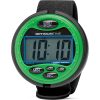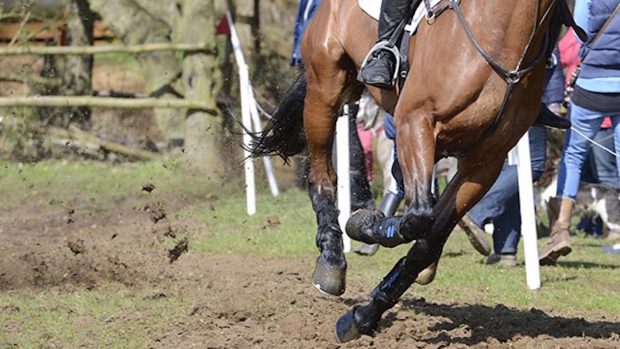If you’re thinking about entering your first-ever unaffiliated one-day event or you’ve been out of the game a while but have just signed back up with British Eventing (BE), then you might be wondering what to wear for eventing to make sure you’re well prepared for the big day.
Correct dress at competitions depends slightly on the level at which you are competing and whether you’re going affiliated or unaffiliated. If you’ve got an unaffiliated event in mind, their guidelines will be based on the affiliated rules, which you can skip down to read about in full. If you’re heading to an unaffiliated competition, then keep reading from here.
What to wear for eventing
Exactly what’s required for each phase is a combination of safety, tradition and rider comfort, however, at lower levels you will wear the same for the dressage and showjumping.
In short, you’ll need the following items, but we’ve got lots more information on the specific rules, including for each discipline and level, below:
- riding hat – this should be up-to-standard and you’ll need a jockey skull for cross-country. (See our guide to the best jockey skulls)
- riding boots – you’ll need either long leather boots or short boots teamed with leather gaiters, both in black or brown. (See our guide to the best long boots)
- breeches – these were traditionally light in colour, but can now be navy or black, too. (See our guide to the best competition breeches)
- show jacket – in any single conservative colour or tweed at lower levels. Some coloured and contrast elements are permitted. (See our guides to the best show jackets and best tweed jackets)
- show shirt – long- or short-sleeved with appropriate collar for a stock or tie. (See our guide to the best show shirts)
- stock or tie – it’s up to you, but stocks are more common (tradition suggests to wear white with black/navy jacket but coloured with tweed)
- gloves – make sure you’ve got good grip, especially for cross-country. (See our guide to the best riding gloves)
- base layer – any colour, long sleeves recommended. (See our guide to the best base layers)
- body protector – must be BETA level 3 (2018), air jackets optional. (See our guide to the best body protectors)
- number bib – it’s best to get some bib numbers, too, in case you need to provide your own
- stopwatch – optional, but can be useful

LeMieux Number Bib | Amazon
This bib is available in a selection of colours so that you can display your competition number. It has adjustable side and shoulder straps for a good fit.

Optimum Time OE Series 3 Event Watch | Amazon
Available in 7 colours, this watch is can be really useful. It comes on an elasticated strap, gives minute beep signals and has a 16mm display with an adjustable viewing angle.
Other important tips
- Stocks should always be tied properly
- Long hair should be secured appropriately – tied back and in a hairnet
- Competitors are advised to remove jewellery

Hy Hair Nets | Viovet.co.uk
These hair nets are available in two different weights and a range of colours for a smart, discreet look.
What to wear at an unaffiliated eventing competition
You won’t go wrong if you adhere to the affiliated rulebook, as described below. However, the dress code tends to be more lenient at local unaffiliated shows. Whatever the level of show, you’ll want to be smartly turned out in jacket, breeches and stock or tie for the dressage and showjumping phases. For cross-country, a body protector is mandatory and you can choose your cross-country colours, although long sleeves are recommended.
Your best best is to stick to the list above, and if you want to wear something different – for example, different coloured breeches – contact the show secretary to check that it is permitted. You will also need to find out what sort of bib numbers are required – some shows provide bib numbers, others will ask you to print them out at home.
Two items that are essential whatever the code, are a hat that meets the current riding hat safety standards and a body protector that has the blue BETA Level 3 (2018) label, which shows it meets the current body protector safety standards.
If you wish to wear an inflatable/air jacket, for cross-country it must be worn over a permitted body protector.
What to wear for affiliated eventing
Hats
In a nutshell: For dressage and showjumping, as long as your riding hat is up-to-standard you can wear any style. For cross-country, however, you’ll need a jockey skull, which you can wear for all three phases if you’d like.
More specifically:
- Protective headwear must be worn by anyone mounted at a BE competition, with the harness correctly fastened.
- All hats must be tagged with a visible current BE (or Pony Club/British Riding Clubs) tag.
- The hat must meet at least one one of the following standards:
- – British and European: PAS 015 (2011), VG01.040 2014-12 or BS EN1384:2023, all with BSI Kitemark or Inspec IC Mark
- – American: ASTM F1163 15 or 23 with SEI Mark or SNELL 2016 or 2021
- – Australian and New Zealand: AS/NZS 3838 2006 onwards with SAI Global Mark
- Cross-country headwear must have no peak or peak-type extensions. Protuberances above the eyes limited to 5mm max and must be smooth or rounded in nature. A removable hat cover with light flexible peak is permitted.
Spurs
In a nutshell: These are optional at all levels.
More specifically:
- Must be smooth metal, blunt and incapable of wounding a horse.
- Shank must be no longer than 4cm long and must point to the rear and downwards.
- Metal spurs with round plastic, metal or rubber knobs are not permitted.
- Rowel spurs are permitted but not in young horse classes.
- Tines and Spursuader spurs are not permitted.
What to wear for eventing dressage and showjumping
At advanced; advanced intermediate and intermediate championships, competitors should wear:
- Protective headwear in black or dark blue
- Black or dark blue tailcoat or short jacket. Navy jackets with red collar and white piping are reserved solely for British team members.
- White stock or tie
- Gloves
- Plain black or brown boots, full grain smooth leather gaiters with matching boots or topped boots
- White, fawn, buff, navy or black breeches
- Or uniform with protective headwear
Intermediate and below:
- Protective headwear in black or dark blue
- Jackets may be any single conservative colour in muted tones. Subtle pinstripes, piping and coloured collars are permitted, as is contrast piping to the collar, lapels, pockets and vents. Tweed should not be brightly coloured or boldly patterned. Navy jackets with red collar and white piping are reserved solely for British team members.
- If a waistcoat is worn, it must be in a conservative colour with muted tones.
- Long or short-sleeved shirt that fastens at the neck (white, cream or conservative/muted colour)
- Tie, American collar or correctly fastened stock.
- Gloves
- For intermediate: plain black boots or topped boots or full grain smooth black leather gaiters with matching boots with white, buff or fawn breeches.
- Below intermediate, riders can wear brown boots or brown leather gaiters with matching boots, with buff or brown breeches.
- For ONu18 classes, riders under the age of 16 may wear jodhpur boots with matching plain black or brown half chaps.
- Or uniform with protective headwear.
Things to note
Whips are not permitted in any form during the dressage test. One whip, no longer than 120cm including lash, maybe carried while riding on the flat.
The type of bib number worn is at the discretion of the organiser. Competitors may need to produce their own bib number.
One whip, maximum length 75cm and not weighted, may be carried for the showjumping phase.
What to wear for cross-country
Competitors should wear a sweatshirt, shirt or base layer — ideally with long sleeves — white, buff, fawn, navy or black breeches, plain black, brown or topped boots or black/brown leather gaiters with matching boots.
Safety wear
At all levels, protective headwear with a cover should be worn.
Body protectors are mandatory and must be British Equestrian Trade Association (BETA) approved, labelled as Level 3 (2018). Exo Body Cages can be worn but must be declared to the event secretary before going cross-country.
Air jackets are optional, but must be worn over a permitted body protector if you want to wear one for the cross-country phase. However, they can be worn for showjumping and dressage without the body protector.
Things to note
One whip, maximum length 75cm and not weighted, may be carried for the cross-country phase.
Bib numbers must be worn and be clearly visible from in front and behind.
For competitors in international classes, consult the FEI rules.
You may also be interested to read…

Should you wear a stopwatch to go cross-country when eventing?

Get ready for the 2024 competition season with 9 body protectors to suit all riders

14 of the best long leather riding boots for every budget

5 helmets that incorporate MIPS technology

Find your next set of cross-country colours here

Subscribe to Horse & Hound this spring for great savings
Horse & Hound magazine, out every Thursday, is packed with all the latest news and reports, as well as interviews, specials, nostalgia, vet and training advice. Find how you can enjoy the magazine delivered to your door every week, plus options to upgrade your subscription to access our online service that brings you breaking news and reports as well as other benefits.




